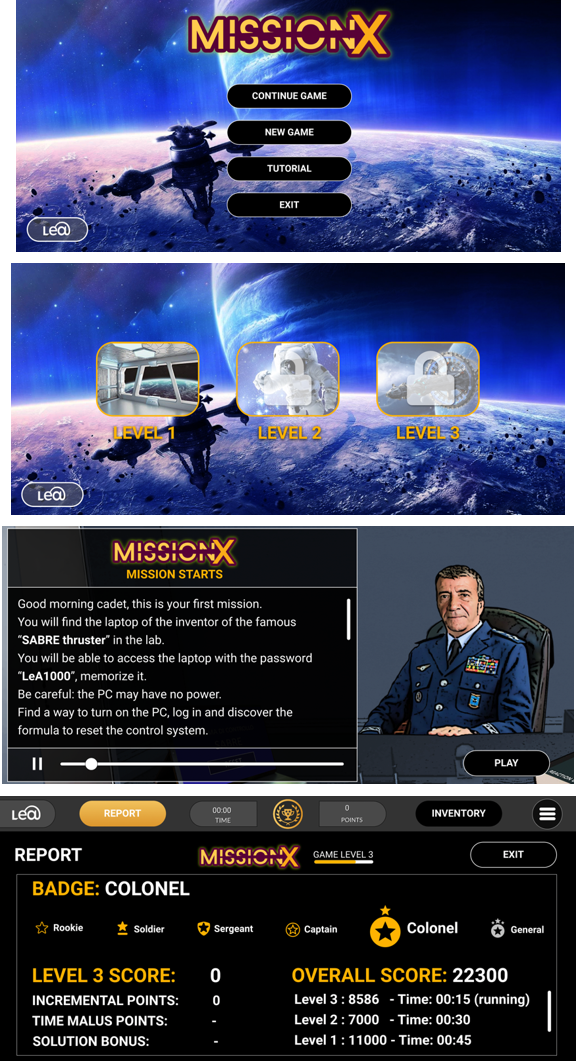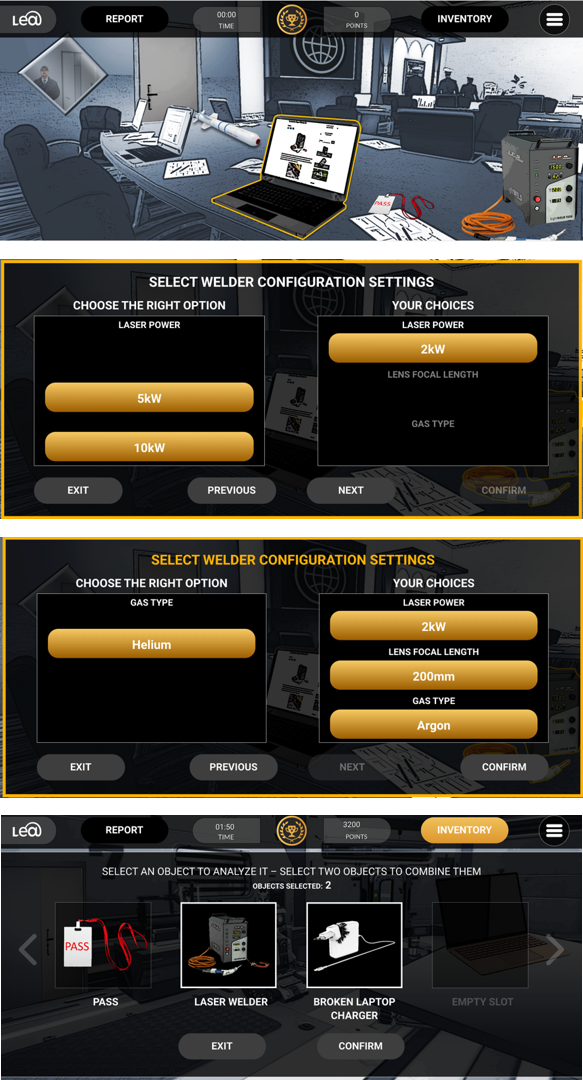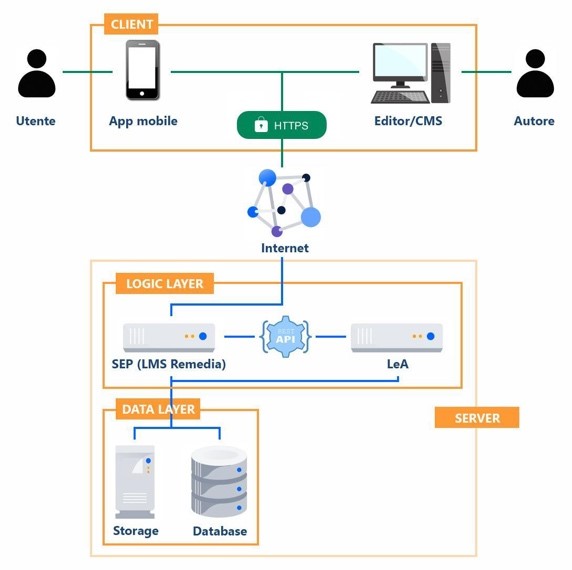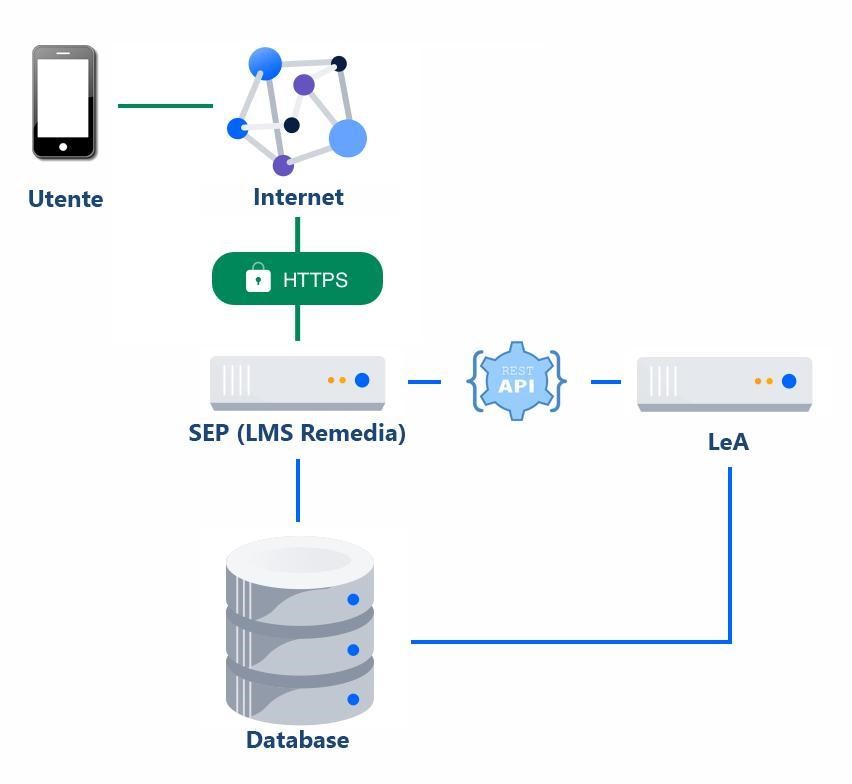
Objectives of the service
Serious games have been experimented for several years; the use of a playful activity is a relatively simple way to activate the learner empathy, regardless of his age.
The great lever of Serious games is that they can combine learning strategies and game elements, to teach specific skills, knowledge and attitudes.
They are used in many different areas and can be applied to a wide range of topics such as Education, Health care and Adult Education.
Study results * show that students who played serious games scored higher and serious play seems to be more effective on self-reported learning outcomes than traditional classroom settings.
LEA, will allow to easily create multimedia and interactive games, either for educational or training purposes, to respond to users' needs, particularly concerning the teaching of STEM topics. The result will be a digital tool that makes use of Space Assets, through which it will be possible to approach the learning and study of scientific subjects in a total different and innovative way, thanks to a didactic methodology that is conceived, natively, in the perspective of play and simulation.
* Bakhuys Roozeboom, M.M.C.; Visschedijk, G.C.; Oprins, E.A.P.B.; The effectiveness of three serious games measuring generic learning features 2017 British Journal of Educational Technology, 48 (1), 83-10 and https://www.nasa.gov/larc/online-space-game-aims-to-help-teens-learn-stem-principles


Users and their needs
The project foresees the use of consolidated technologies which guarantees a technical risk level zero while the highest innovation in Methodology will be offered.
Our service aims to respond to a profound change in the structure of the educational and training needs of the younger generations, our main users, in the technical and scientific disciplines. In particular, our system will allow to study a scientific subject with a playful, emotional and effective approach, using a simple smartphone and an internet connection, able to include even those with special educational needs, sensory disabilities or learning problems.
The immediate need to be satisfied is to enable people to acquire knowledge, skills and abilities in the field of scientific disciplines in a quick, fun and effective way.
More specifically, the need, which characterizes the end-user of our technologies, that is a school student or a learner of a training course (university or company), consists in the possibility of being able to accelerate the study and the individual learning process and make it more effective, in terms of memorization and understanding of contents.
In the case of the B2B segment, i.e., when the customer pays for the service and makes our products available to their students and pupils, the need to be satisfied consists instead in making the teaching methods used more innovative, efficient and effective, both in case the customer is a school or a university or either a company, public or private.
For the B2B2C segment, the need to be satisfied is to provide companies with an innovative tool. Companies will therefore be able to commission serious games that have as their purpose, the learning, in a playful context, of stem materials, which will be made available free of charge to final users.
Service/ system concept
LeA aims, in particular, to create a software system for the production and proposition of learning systems belonging to a subset of the category of serious games. It is assumed that the prevalent use of the tool will be through a smartphone and the interaction subsystem is designed to take full advantage of the potential of the web browser installed on it.
The following picture represents the logical architecture of use and operation of the LeA platform and its interactions with end users, authors and server infrastructure.

The following is a schematic representation of the high reliability hardware architecture of the system and the integration with ReMedia's e-learning platform.

Space Added Value
Remedia's use of Space Assets generates a different kind of serious game, depending on the type of Asset. For example, in the LeA prototype there are a series of scientific data, contained in the quizzes that are given to the user, that derive from knowledge related to the laws of physics and more; in this specific case, we are just talking about a prototype realized to show the possible future development of the project.
The use of Space Assets that couldthat will result from LeA could be the following:
SatEO: a serious game can be developed by processing data coming from Copernicus sentinels, creating a game that talks about ice thickness, climate change, altimetry and so on. This processed data, coming from the sentinels, will be used to generate the game content, necessary for the creation of an educational path, which, thanks to final quizzes, can recognize to the user a badge or a level of advancement in his learning journey.
SATcom: the use of this particular space asset implies can help bringing LeA in remote areas and supply the service to schools free of charge, by providing SATcom Services within the development of an eventual demo project, by establishing a partnership with a specific provider
SATNav: the use of navigation satellites will work thanks to the integration of a navigation system in LeA software, which would download data from all available navigation satellites, such as Galileo, and guide the user through a treasure hunt, through which the user can learn by playing and discovering.
Current Status
The Kick Start activity was finalised in May 2022, reaching as a conclusion that serious games are a tool that boost education in a unique way and this is true also in the STEM topics; the mentioned space asset can be integrated in the editor of LeA and the result is a digital tool that serves ESA by utilising its services while disseminating its activities to the world of education.



